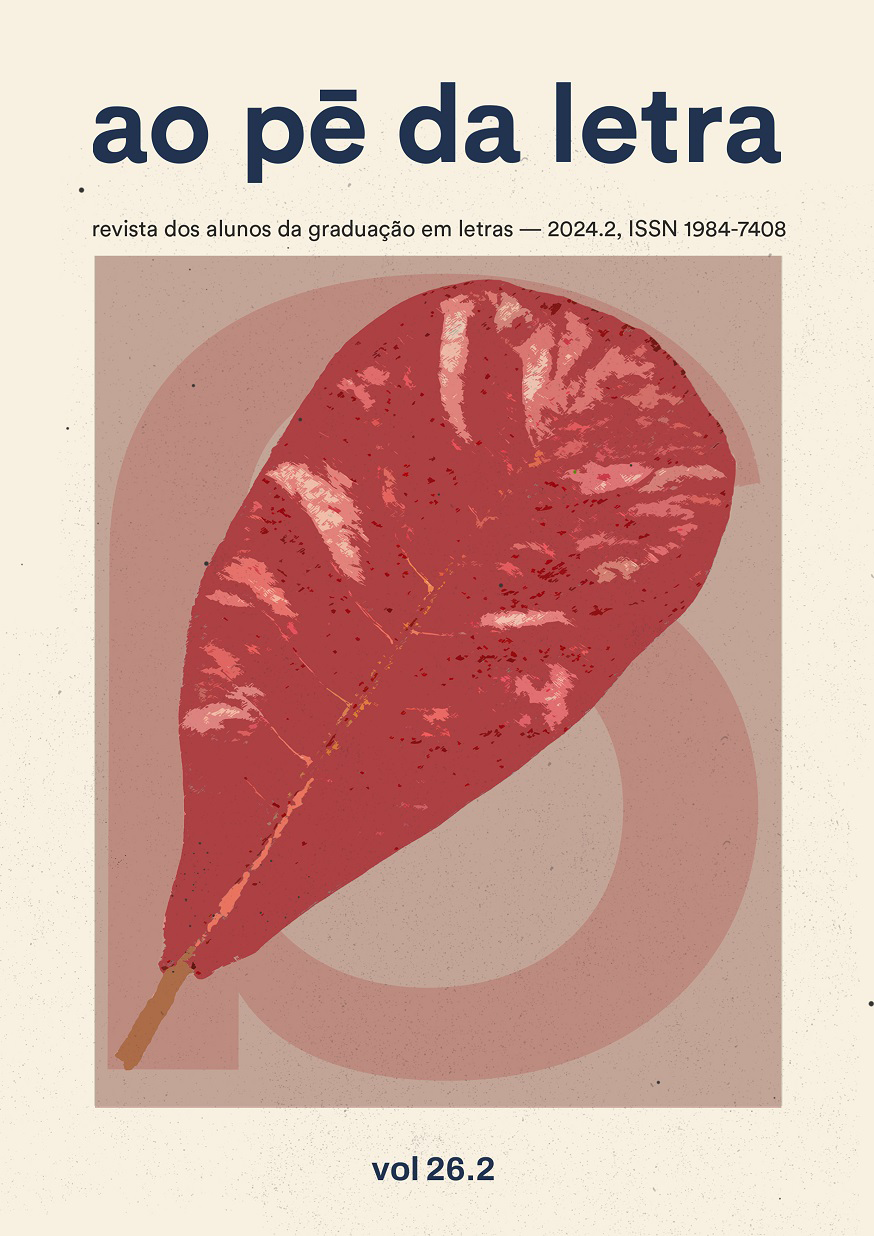Queering the Canon: a Queer Reading of The Great Gatsby by F. Scott Fitzgerald
DOI:
https://doi.org/10.51359/1984-7408.2024.260062Palabras clave:
queer theory, textual analysis, queer reading, F. Scott Fitzgerald, American literatureResumen
The present article aims to undertake a queer reading (Sedgwick, 2002) of the novel The Great Gatsby by F. Scott Fitzgerald based on queer theory. The main objective consists of verifying the apparent queerness of the protagonist considering the choice of words in the novel, the time it takes place (1920s) and his relationship with other characters. A textual analysis has been carried out taking into consideration the queer elements of the novel, such as the gay and lesbian signs that corroborate with the queer subtext that appears as a result of Nick Carraway’s gay sensibility within the narrative (Tyson, 2015). In this sense, excerpts that readers might interpret as queer-coded have been analysed. The results show that it is possible to identify not only the queer subtext of the novel but also why queer readers might relate to it.
Citas
BARTHES, Roland. The Death of the Author. London: Fontana, 1977.
BELSEY, Catherine. Textual Analysis as a Research Method. In: GRIFFIN, Gabriele. Research Methods for English Studies. Edinburgh: Edinburgh University Press, 2013. p. 160-178.
BERMAN, Ronald. The Great Gatsby and the twenties. In: PRIGOZY, Ruth. et al. The Cambridge Companion to F. Scott Fitzgerald. New York: Cambridge University Press, 2002. p. 79-94.
FITZGERALD, F. Scott. The Great Gatsby. New York: Scribner, 2003.
FRIEDMAN, Norman. Point of View in Fiction: the development of a critical concept. In: STEVICK, Philip. The Theory of the Novel. New York: The Free Press, 1967. p. 166-182.
FRASER, Keath. Another Reading of The Great Gatsby. ESC: English Studies in Canada, v. 1, n. 3, p. 330-343, 1979. Disponível em: https://muse.jhu.edu/article/692822. Acesso em: 13 ago. 2023.
HAZRA, Neha. Queerer than Canon: Fix-it Fanfiction and Queer Readings. SUURJ: Seattle University Undergraduate Research Journal, Seattle, v. 5, n. 16, p. 116-124, jun. 2021. Disponível em: https://scholarworks.seattleu.edu/suurj/vol5/iss1/16. Acesso em: 15 jul. 2023.
HERMAN, Daniel. The Great Gatsby’s Nick Carraway: His Narration and His Sexuality. ANQ: A Quarterly Journal of Short Articles, Notes and Reviews, [S. l.], v. 30, n. 4, p. 247-250, jul. 2017. Disponível em: https://doi.org/10.1080/0895769X.2017.1343656. Acesso em: 10 jul. 2023.
JAGOSE, Annamarie. Queer Theory: An Introduction. New York: New York University Press, 1997.
SCHILB, John; CLIFFORD, John. A Brief Guide to Arguing about Literature. Boston: Bedford/St. Martin’s, 2017.
SEDGWICK, Eve Kosofsky. Between Men: English Literature and Male Homosocial Desire. New York: Columbia University Press, 1985.
SEDGWICK, Eve Kosofsky. Paranoid Reading and Reparative Reading, or, You’re so Paranoid, You Probably Think this Essay is About You. In: Touching Feeling. Durham: Duke University Press, 2002. p. 123-151. Disponível em: https://www.ias.edu/sites/default/files/sss/pdfs/Critique/sedgwick-paranoid-reading.pdf. Acesso em: 12 out. 2022.
STOCKTON, Will. An Introduction to Queer Literary Studies: Reading Queerly. New York: Routledge, 2023.
SULLIVAN, Nikki. A Critical Introduction to Queer Theory. New York: New York University Press, 2007.
TYSON, Lois. Critical Theory Today: A user-friendly guide. New York: Routledge, 2015.
WASIOLEK, Edward. The Sexual Drama of Nick and Gatsby. The International Fiction Review, [S. l.], v. 19, n. 2, p. 14-22, jan. 1992. Disponível em: https://journals.lib.unb.ca/index.php/IFR/article/view/14120. Acesso em: 13 ago. 2023.
Descargas
Publicado
Número
Sección
Licencia
Derechos de autor 2024 Autor, concedendo à revista o direito à primeira publicação

Esta obra está bajo una licencia internacional Creative Commons Atribución 4.0.
Autores que publicam nesta revista concordam com os seguintes termos:
- Autores mantém os direitos autorais e concedem à revista o direito de primeira publicação, com o trabalho simultaneamente licenciado sob a Licença Creative Commons Attribution 4.0 Internacional (CC BY 4.0) que permite o compartilhamento do trabalho com reconhecimento da autoria e publicação inicial nesta revista.
- Autores têm autorização para assumir contratos adicionais separadamente, para distribuição não-exclusiva da versão do trabalho publicada nesta revista (ex.: publicar em repositório institucional ou como capítulo de livro), com reconhecimento de autoria e publicação inicial nesta revista.
- Autores têm permissão e são estimulados a publicar e distribuir seu trabalho online (ex.: em repositórios institucionais ou na sua página pessoal) a qualquer ponto antes ou durante o processo editorial, já que isso pode gerar alterações produtivas, bem como aumentar o impacto e a citação do trabalho publicado (Veja O Efeito do Acesso Livre).

